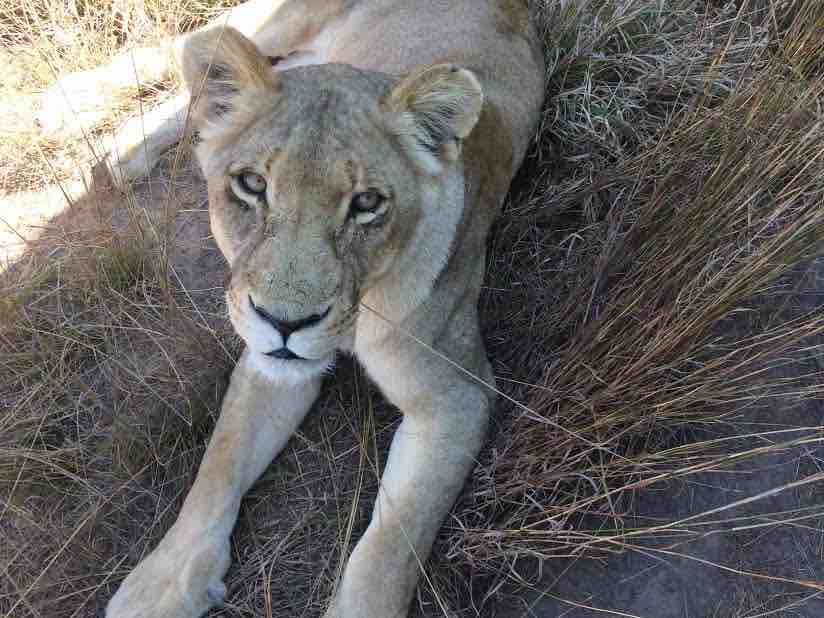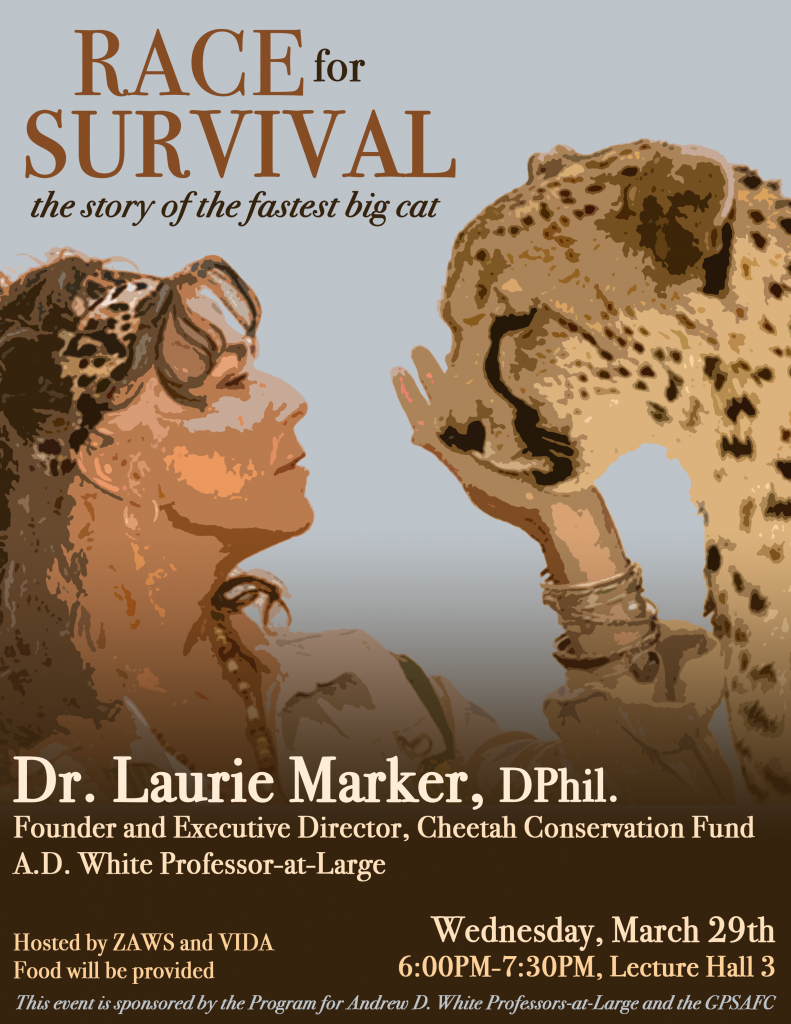The worlds of veterinary medicine, public health, conservation, and ecology came together during Saturday’s Tropical Biology and Conservation Lightning Symposium. The symposium consisted of 23 five minute talks, given by veterinary students, graduate students, undergraduate students, and professors. Dr. Steven Osofsky DVM, Jay Hyman Professor of Wildlife Health & Health Policy, gave the hour-long keynote speech.
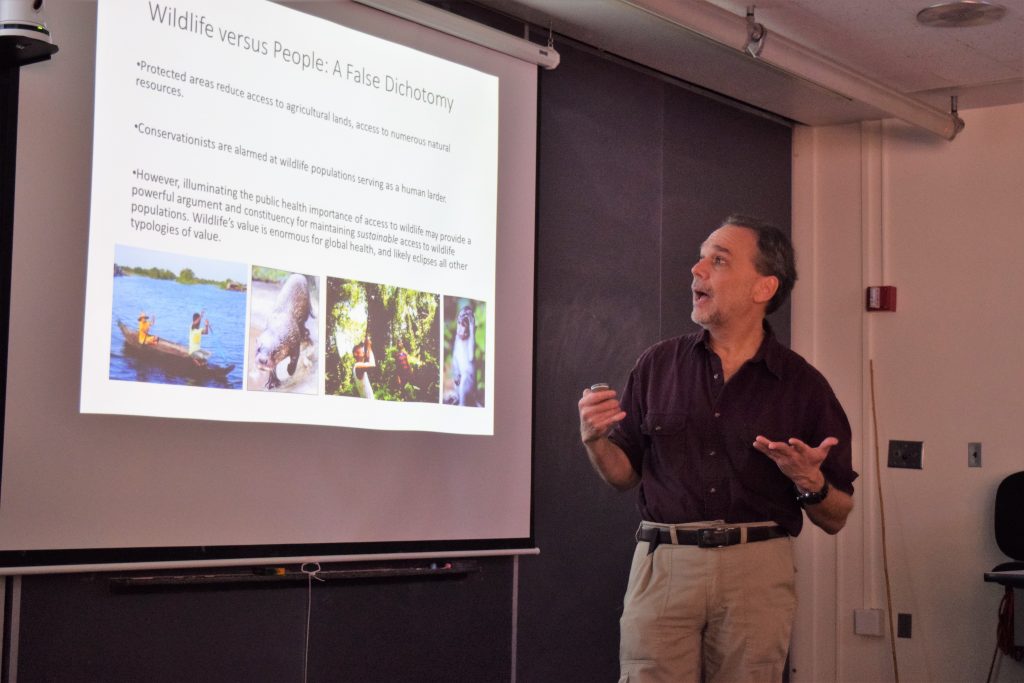
Dr. Steve Osofsky discussing human health as an opportunity for conservationists.
Dr. Osofsky discussed a wide range of topics from Canine Distemper in Amur tigers, to rhino conservation, to Foot and Mouth Disease in African livestock. The presentation shifted to a human focus as he discussed how economically disadvantaged areas benefit greatly from ecosystem services. Osofsky spoke about Dr. Christopher Golden’s research in Madagascar, which showed how villages with low levels of wildlife had higher rates of childhood anemia. Some of the villages had allowed outsiders to hunt the local wildlife, reducing the amount of bush meat available for the local population. Dr. Osofsky noted that “by educating the villages themselves, they all of a sudden saw wildlife as relevant to the future of their entire family lineage.” He concluded his talk by explaining the term “Planetary Health” and emphasizing the opportunity that human health provides to conservationists.
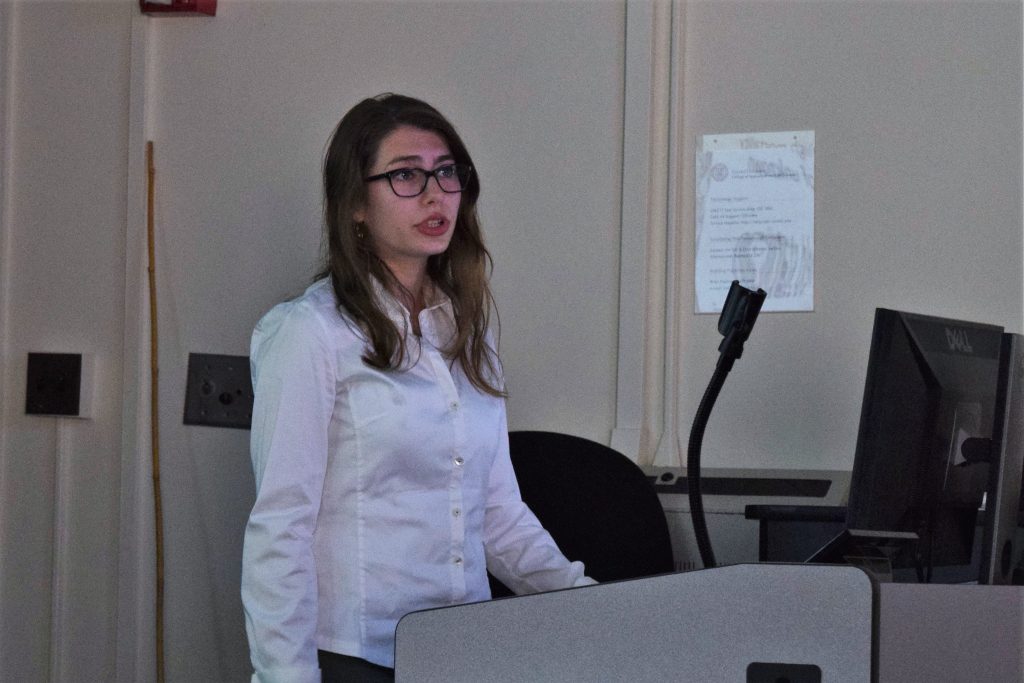
Sarah Balik discussing her research on Chimpanzee respiratory diseases.
For the rest of the symposium, students gave five minute “lightning talks” on their research in different fields. Veterinary student Sarah Balik (’19) presented her work with the Jane Goodall Institute in Uganda on respiratory diseases in chimpanzees. In the spirit of planetary health, she compared data collected from locals during health screenings to data on respiratory diseases in wild chimpanzees, to determine the relationship between human-chimpanzee contact and disease outbreaks. Balik found that there was no correlation between the timing of outbreaks of human and chimpanzee respiratory disease. “This is a preliminary epidemiological study, so further research needs to be done to determine what is causing so many chips to die of respiratory disease in Kibale. In addition, researchers and workers at the field site spend much more time in contact with the chimps. Foreign researchers weren’t included in the study and have the potential to bring diseases with them, so biosecurity measures also need to be taken to prevent researchers from transmitting disease to the chimpanzees they work with,” Balik said.
Melissa Hanson (’19), another vet student who worked through the Jane Goodall Institute, discussed her experience working with cardiologists on wild chimpanzees in the Republic of the Congo. Several veterinary students talked about infectious disease, such as Eric Teplitz (’20) who presented his work in Malawi on the shedding patterns of Salmonella and Shigella in primates, Rachel Hilliard (’19) who discussed her research on tick-borne diseases in goats within Queen Elizabeth National Park in Uganda, and William Fugina (’19) who worked with the World Wildlife Fund in Indonesia to study the vector biology of Trypanosoma evansi, a pathogen in water buffalo that threatens the critically endangered Javan rhinoceros.

Molly Chirunomula talking about her work with the Ara Project.
Molly Chirunomula (’19) worked with the Ara Project in Costa Rica, which aims to conserve local macaw species. The center was unable to breed their great green macaws. Molly conducted an intake study of the macaws’ diets to try to identify nutritional causes of poor reproductive success. She found that the macaws were consuming low levels of fat, protein, and calcium, all of which are important for egg production. Molly recommended a change in diet that would mimic the birds’ natural seasonal dietary variation, and exclude animal protein. By implementing Molly’s recommendations, the Ara Project succeeded in breeding macaws by the next breeding season!
Zack Dvornicky-Raymond (’19) worked with the Cheetah Conservation Fund in Namibia, which serves to address a serious threat to the cheetah population: farmers hunting cheetahs to prevent them from killing livestock. The Cheetah Conservation Fund breeds guard dogs for farmers, to give them an alternative way to protect their livestock. When Zack started working with the organization, they were having difficulties breeding the dogs. Zack, who has prior experience in canine reproduction through the Travis lab at Cornell, helped to diagnose the problems in their breeding program and develop protocols for more successful breeding in the future.

Robert Marquez explaining strategies for protecting the Andean bear.
Of the non-veterinary talks, some were aimed at wildlife conservation, such those of Robert Marquez, who studied conflicts between humans and Andean bears, and Steven Sevillano-Rios, who worked to identify conservation priorities in order to protect Peruvian birds. Other talks were about basic science, such as Jay Falk’s presentation on female limited polymorphisms in hummingbirds. Dr. James Lassoie finished off the five minute presentations with a critical discussion about the unintended consequences of conservationism.
Overall, the symposium successfully brought together researchers and students from across campus, tackling a diverse array of tropical conservation and ecological problems. Many speakers emphasized the importance of working with local communities and other disciplines to achieve both conservation and human health goals. Dr. Osofsky opined – “if we do this next year, I want to see more economists, students from the business school, communication students, social scientists…” Hopefully, future symposia will further bridge the gap between disciplines, helping the academic community pursue One Health.

Complete list of speakers at the Tropical Biology and Conservation Symposium
Written by Jonathan Gorman, Events Journalist and Photographer, Class of 2021.

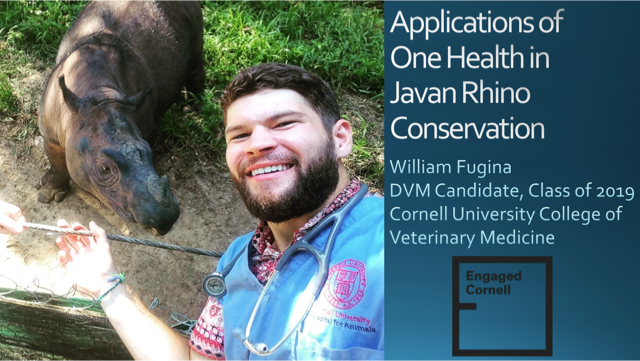 What: William Fugina will talk about his experience this summer with Javan Rhino conservation in Indonesia. He will be serving an authentic vegetarian Indonesian dish so bring your own tupperware.
What: William Fugina will talk about his experience this summer with Javan Rhino conservation in Indonesia. He will be serving an authentic vegetarian Indonesian dish so bring your own tupperware.
